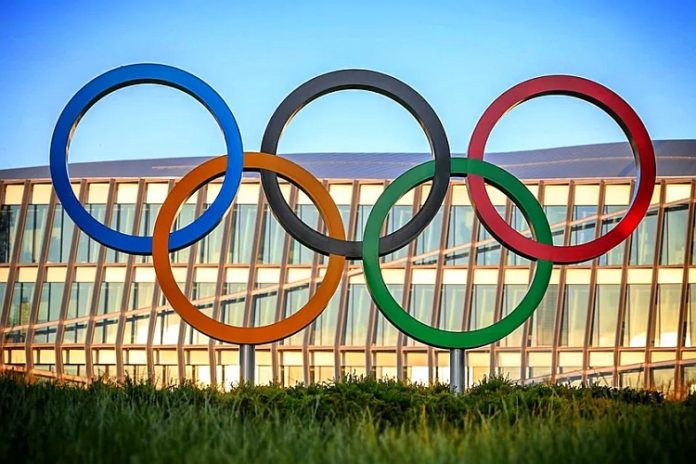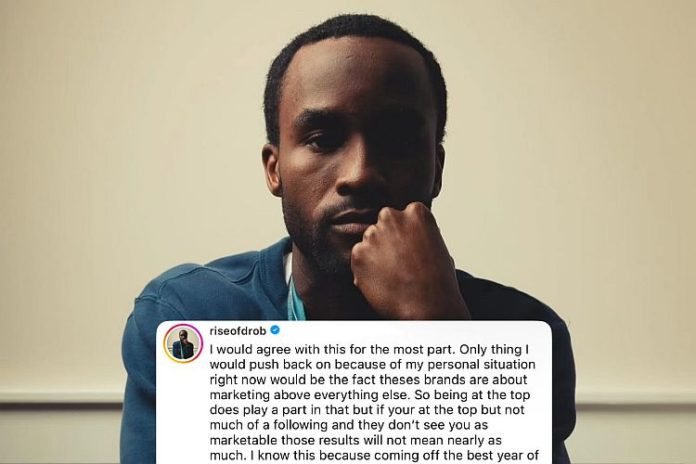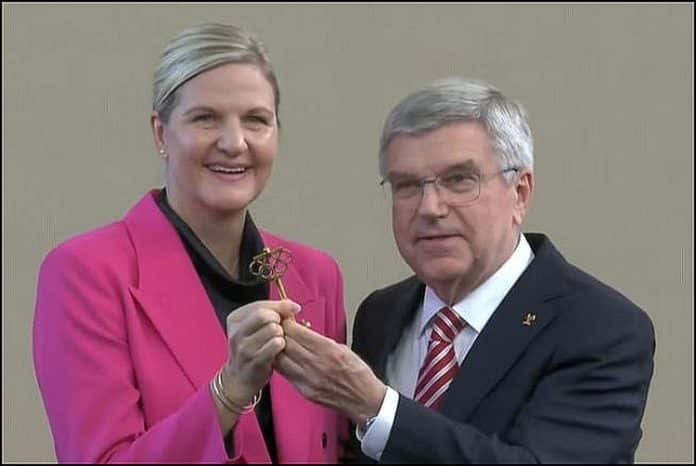★ The Sports Examiner: Chronicling the key competitive, economic and political forces shaping elite sport and the Olympic Movement.★
★ To get the daily Sports Examiner Recap by e-mail: sign up here! ★
≡ ANNUAL REPORT ≡
With the Presidential handover ceremony coming on Monday (23rd), the final deliverable of the Thomas Bach Era – the International Olympic Committee’s Annual Report for 2024 – was made available on Friday (20th).
Most of the 244 pages were a review of the very successful 2024 Paris Olympic Games and a celebration of many of the IOC’s programs and the themes of the Bach presidency, including the important Olympic Agenda and the myriad of social and environmental programs.
None of those things are possible without money, and there are 49 pages of financial statements at the back of the book which tell the tale of what Bach is leaving for his successor:
“• Since the adoption of Olympic Agenda 2020, the IOC’s commercial revenue from The Olympic Partner (TOP) programme and media rights has grown from USD 5.2 billion (2013–2016) to USD 6.9 billion (2017–2020/21) and now to USD 7.7 billion (2021–2024).
“• USD 7.5 billion has already been secured for 2025–2028, with a further USD 6.9 billion secured for 2029–2032 and USD 4.0 billion for 2033–2036.”
The IOC constantly states, and the Annual Report repeatedly underlines that the organization distributes 90% of its revenue for the benefit of the Olympic Movement. Well, not quite. Looking at the IOC’s financial statements during the 2021-24 timeframe (revenues include investment gains or losses):
● 2024: $4.621.3 billion revenue (Olympic year)
● 2024: $1.133.8 billion to reserves
● 2024: $196.3 million operating costs
● 2024: 71.2% distributed
● 2023: $1.122.5 billion revenue
● 2023: $201.2 million to reserves
● 2023: $185.5 million operating costs
● 2023: 65.6% distributed
● 2022: $2.339.0 billion revenue (Winter Games year)
● 2022: $222.8 million to reserves
● 2022: $173.9 million operating costs
● 2022: 83.0% distributed
● 2021: $4,194.2 billion revenue (postponed Olympic year)
● 2021: $843.8 million to reserves
● 2021: $189.7 million operating costs
● 2021: 75.4% distributed
The 2021 figure is a bit deceiving, since the television rights payable in 2020 for the Tokyo Olympic Games were deferred for a year and show up in 2021. That amount was $3.107.4 billion, so if the 2021 figures are restated (not possible to estimate what the amount to reserves would have been):
● 2021: $1,086.8 billion revenue (without TV rights)
● 2021: $189.7 million operating costs
● 2021: 82.6% distributed, not including reserves
Add all of these figures into a quadrennial total and you get:
● 2021-24: $12.070.5 billion revenue (with 2021 TV rights)
● 2021-24: $2,401.6 billion to reserves
● 2021-24: $745.3 million operating costs
● 2021-24: 73.9% distributed
● 2021-24: $8.963.2 billion revenue (without 2021 TV rights)
● 2021-24: $2,401.6 billion to reserves (assumed same)
● 2021-24: $745.3 million operating costs
● 2021-24: 64.9% distributed
(“Operating costs” include salaries, maintenance, meeting, transportation, depreciation and contracted services.)
So, the IOC distributed billions to outside groups and to external programs – essentially 75 cents of every dollar – but not quite 90%. The major recipients included three primary groups:
● Olympic Organizing Committees, with Paris 2024 receiving $1.991 billion in cash and services and Beijing 2022 receiving $970 million.
● International Federations, with summer federations receiving $590.1 million and winter federations getting $201 million.
● National Olympic Committees, through the Olympic Solidarity program, which received $590.1 million for 2021-24. In addition, the U.S. Olympic & Paralympic Committee, through agreements dating back to 1996, receives a specific share of U.S. television rights and TOP monies, totaling $784.9 million from 2021-24.
Those three elements add up to $5.127.1 billion, or 57.2% of the IOC’s revenues (without the Tokyo 2020 TV rights included) from 2021-24.
The IOC also pays for a lot of other services, including in 2024:
● $437.198 million to its Olympic Broadcasting Services subsidiary
● $20.475 million to the World Anti-Doping Agency
● $9.142 million to the Court of Arbitration for Sport
● About $2.5 million to support the Olympic Movement Unit on the Prevention of the Manipulation of Competitions (OM Unit PMC: $10 million per quadrennial)
● $2.000 million to the International Paralympic Committee
There is also support for the International Testing Agency, which was not separately shown.
The report confirmed that the IOC provided Olympic Scholarships to 1,560 athletes from 95 National Olympic Committees to summer-sport athletes, of which 599 actually competed at Paris 2024 (from 172 NOCs) in 24 sports. Those athletes ended up winning 75 medals (26-20-29) at Paris 2024.
Another 364 athletes from 77 NOCs received Olympic Scholarships in the 2023-24 season related to the 2026 Olympic Winter Games in Milan Cortina (ITA), and 226 teams of various types from 142 NOCs received IOC support from 2021-24.
The IOC Refugee Team had 37 athletes in Paris, competing in 12 sports, with Cameroon-born 75 kg boxing bronze winner Cindy Ngamba claiming the first-ever medal by a Refugee Team member!
As you would guess from these figures, the IOC is exceptionally healthy financially, showing $6.120 billion in total assets, with reserves of $4.880 billion. By comparison, when Bach was in his first year as President, at the end of 2013, the IOC had assets of $3.448 billion and reserves of $1.745 billion in reserves. It’s been a good 12 years.
Looking to the future, Bach has emphasized the digital revolution, telling the IOC membership last summer that despite calls for him to stay on, he needed to hand the reins to a younger leader. And he noted in his commentary his recipe for the future is to focus on young people:
“[I]f we want to stay relevant, we must meet them where they are.”
¶
★ Receive our exclusive, weekday TSX Recap by e-mail by clicking here.
★ Sign up a friend to receive the TSX Recap by clicking here.
★ Please consider a donation here to keep this site going.
For our updated, 694-event International Sports Calendar for 2025 and beyond, by date and by sport, click here!























